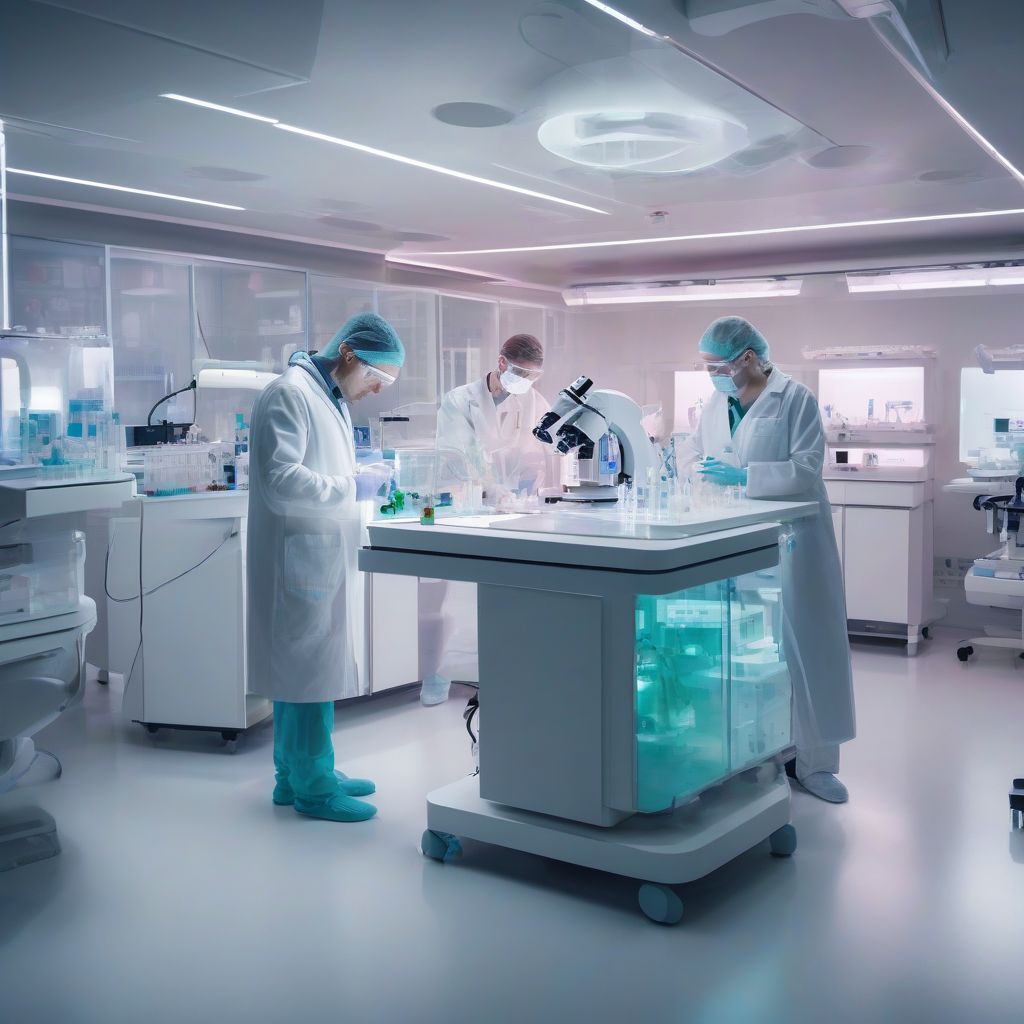Imagine a future where damaged organs can be regrown, spinal cord injuries reversed, and chronic diseases like diabetes cured. This isn’t science fiction, it’s the promise of regenerative medicine, a revolutionary field transforming the future of healing. This approach moves beyond treating symptoms and aims to repair or replace damaged tissues and organs, offering hope for previously incurable conditions. But how exactly is it changing the landscape of healthcare? Let’s delve in.
Understanding Regenerative Medicine
Regenerative medicine is a broad field encompassing several approaches, all with the common goal of restoring function to damaged tissues and organs. These approaches include:
Tissue Engineering and Biomaterials
This involves creating functional tissues and organs in the lab using a combination of cells, biomaterials, and growth factors. Think of it as building a new organ brick by brick, using the body’s own building blocks.
Cellular Therapies
These therapies use cells, often stem cells, to repair or replace damaged tissues. Stem cells have the remarkable ability to differentiate into various cell types, making them powerful tools for regeneration.
Immunomodulation
This approach focuses on manipulating the immune system to promote healing and regeneration. By either suppressing harmful immune responses or enhancing beneficial ones, immunomodulation can create a more favorable environment for tissue repair.
 Regenerative Medicine: Shaping the Future of Healing
Regenerative Medicine: Shaping the Future of Healing
The Transformative Impact of Regenerative Medicine
Regenerative medicine is already making significant strides in various medical fields, offering new hope for patients:
Orthopedics: Rebuilding Bones and Joints
Regenerative approaches are revolutionizing orthopedics by offering minimally invasive treatments for cartilage damage, tendon injuries, and even bone fractures. Instead of relying solely on surgery, doctors can now use injections of growth factors or stem cells to stimulate the body’s natural healing processes.
Cardiology: Repairing Damaged Hearts
Heart disease remains a leading cause of death worldwide. Regenerative medicine offers a potential solution by using stem cells to repair damaged heart tissue after a heart attack or to treat heart failure.
Neurology: Restoring Neurological Function
Regenerative medicine holds immense promise for treating neurological disorders like spinal cord injuries, stroke, and Parkinson’s disease. Researchers are exploring ways to use stem cells to regenerate damaged nerve cells and restore lost function.
Diabetes: Regulating Blood Sugar
Type 1 diabetes is caused by the destruction of insulin-producing cells in the pancreas. Regenerative medicine offers the possibility of replacing these lost cells, potentially curing the disease.
The Future of Regenerative Medicine: Challenges and Opportunities
While the potential of regenerative medicine is vast, challenges remain:
Cost and Accessibility
Regenerative therapies can be expensive, making them inaccessible to many patients. Increasing access to these life-changing treatments is a crucial challenge.
Ethical Considerations
The use of stem cells, particularly embryonic stem cells, raises ethical concerns that need careful consideration. Balancing the potential benefits with ethical considerations is essential.
Research and Development
Further research is needed to fully understand the mechanisms of regeneration and develop more effective and safer therapies. Continued investment in research and development is crucial for the future of this field.
Despite these challenges, the future of regenerative medicine is bright. Ongoing research and development are paving the way for new and innovative treatments that could revolutionize healthcare as we know it.
How Regenerative Medicine is Addressing Common Health Concerns
Many patients seek information on how regenerative medicine can address their specific health concerns. Some common queries include:
Can regenerative medicine cure arthritis?
While a complete cure is not yet guaranteed, regenerative therapies can significantly reduce pain and improve joint function in patients with arthritis by promoting cartilage regeneration and reducing inflammation.
Is regenerative medicine effective for hair loss?
Emerging research suggests that regenerative therapies, such as platelet-rich plasma (PRP) injections, can stimulate hair follicle growth and improve hair density.
Can regenerative medicine help with wound healing?
Regenerative medicine is showing great promise in accelerating wound healing, particularly in chronic wounds that fail to heal naturally.
Conclusion
Regenerative medicine is not just changing the future of healing; it’s rewriting it. From rebuilding damaged organs to reversing chronic diseases, this revolutionary field holds immense potential to transform healthcare. While challenges remain, the ongoing research and development are paving the way for a future where previously incurable conditions can be effectively treated, offering hope and a better quality of life for millions worldwide. What questions do you have about the future of regenerative medicine? Share your thoughts and comments below, and let’s explore this exciting field together.



